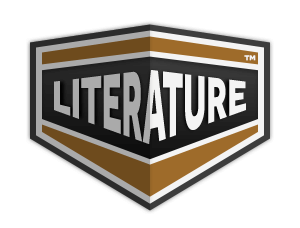The natives of British Central Africa
- 47 Downloads
Lions are common enough to be a plague. Thirteen years ago they were looked on as a thing of the past at Blantyre, though even then they were met with a few miles out on the Matope road, and I have heard, though not seen, them in the Upper Shiré district. (The roaring we heard two or three times, on stormy nights, came, we were assured, from the banks of the Kapeni, six miles away.) But the mysterious disease among the wild buffaloes, antelopes, and other game, which in 1894 spread westward to the lakes and then southward, and when it attacked the cattle in South Africa was known as rinderpest, deprived them of their food, and drove them to invade the more settled districts. Twelve were shot within a few weeks on one plantation, and a planter in the neighbourhood of Zomba, who was riding a bicycle, was chased for some miles by a lion, but ultimately escaped. In some parts, as, for instance, on the low ground near the Shiré, below the Murchison Cataracts, the natives build their huts on raised platforms so as to be safe from lions at night. Leopards also are apt to be dangerous; they prowl about habitations by night, usually in the hope of getting into the goat-kraal, or picking up some stray dog unlucky enough to have been left outside, and are by no means above carrying off the miserable fowls to be found in native villages, one of which can scarcely be a mouthful. But they frequently attack human beings; and at one village a leopard had made a habit of waiting in the grass beside a certain path along which the women went to fetch water from the river, and had killed several before he was shot. Wizards are supposed to take this shape, among others. Domestic animals are not numerous, but we shall come back to them in a later chapter. British Central Africa, says Sir H. H. Johnston, ‘is a country singularly rich in bird life.’ On the Shiré we have a wonderful variety of water-birds—flamingoes, herons, cranes, ducks, geese, plovers—and, to mention no more (these two are among the first noticed by the new comer), the handsome black-and-white fishing-eagle, and the tiny kingfisher, ‘like a flash of blue light.’ Among the hills we have strange forms, like the hornbill, and gorgeous colouring, as in the plantain-eaters and rollers and some of the fly-catchers, and familiar home birds, and their near relations—swallows, thrushes, larks, woodpeckers (the native name for the latter, gogompanda, is very expressive). As to singing-birds, I may quote again from Sir Harry Johnston: ‘Both Mr. Whyte and myself have remarked with emphasis at different times on the beauty of the birds’ songs in the hilly regions of British Central Africa. The chorus of singing-birds is quite as beautiful as anything one hears in Europe, thus quite disposing of one of the numerous fictions circulated by early travellers about the tropics, to the effect that the birds, though
Translation
Translate and read this book in other languages:
Select another language:
- - Select -
- 简体中文 (Chinese - Simplified)
- 繁體中文 (Chinese - Traditional)
- Español (Spanish)
- Esperanto (Esperanto)
- 日本語 (Japanese)
- Português (Portuguese)
- Deutsch (German)
- العربية (Arabic)
- Français (French)
- Русский (Russian)
- ಕನ್ನಡ (Kannada)
- 한국어 (Korean)
- עברית (Hebrew)
- Gaeilge (Irish)
- Українська (Ukrainian)
- اردو (Urdu)
- Magyar (Hungarian)
- मानक हिन्दी (Hindi)
- Indonesia (Indonesian)
- Italiano (Italian)
- தமிழ் (Tamil)
- Türkçe (Turkish)
- తెలుగు (Telugu)
- ภาษาไทย (Thai)
- Tiếng Việt (Vietnamese)
- Čeština (Czech)
- Polski (Polish)
- Bahasa Indonesia (Indonesian)
- Românește (Romanian)
- Nederlands (Dutch)
- Ελληνικά (Greek)
- Latinum (Latin)
- Svenska (Swedish)
- Dansk (Danish)
- Suomi (Finnish)
- فارسی (Persian)
- ייִדיש (Yiddish)
- հայերեն (Armenian)
- Norsk (Norwegian)
- English (English)
Citation
Use the citation below to add this book to your bibliography:
Style:MLAChicagoAPA
"The natives of British Central Africa Books." Literature.com. STANDS4 LLC, 2024. Web. 23 Oct. 2024. <https://www.literature.com/book/the_natives_of_british_central_africa_71018>.

